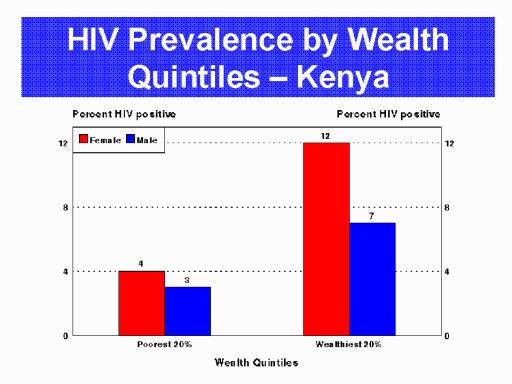| front |1 |2 |3 |4 |5 |6 |7 |8 |9 |10 |11 |12 |13 |14 |15 |16 |17 |18 |19 |20 |21 |22 |23 |24 |25 |26 |27 |28 |29 |30 |31 |32 |33 |review |
 |
The contention that poverty is a major
if not primary determinant of the high rates of HIV transmission and
AIDS is a very socially and politically correct hypothesis, but it
is simply wrong! The major supporting arguments for poverty as the
primary factor for the high rates of HIV/AIDS in Africa are all
wrong and are based on conclusions from flawed and outdated studies.
Countries
with the highest HIV prevalence in sub-Saharan Africa (SSA) are not
the poorest countries in SSA and most of the poorest countries in
the world outside of SSA have the lowest HIV prevalence.
MSM with high sex partner exchange rates have the highest HIV
prevalence and MSM who are mutually monogamous have low or zero HIV
prevalence.
Poverty was not and is not considered a significant
factor for high HIV prevalence in MSM populations.
In the 2003
Demographic and Health Survey that included HIV testing (DHS+) in Kenya, it
was clearly shown that persons in the wealthiest 20 percent of the
population for income had HIV infection rates 2 to 3 times the infection
rate of persons in the lowest wealth quintile presumably because wealthier
persons in Africa have a higher number of different sex partners.
Almost identical findings were reported from the 2003–2004 DHS+ study
in Tanzania and the 2005 DHS+ in Cote d’Ivoire.
However,
poverty is an important factor in Asian heterosexual epidemics that involve
large numbers of low fee female sex workers (FSW) in large commercial sex
networks. |